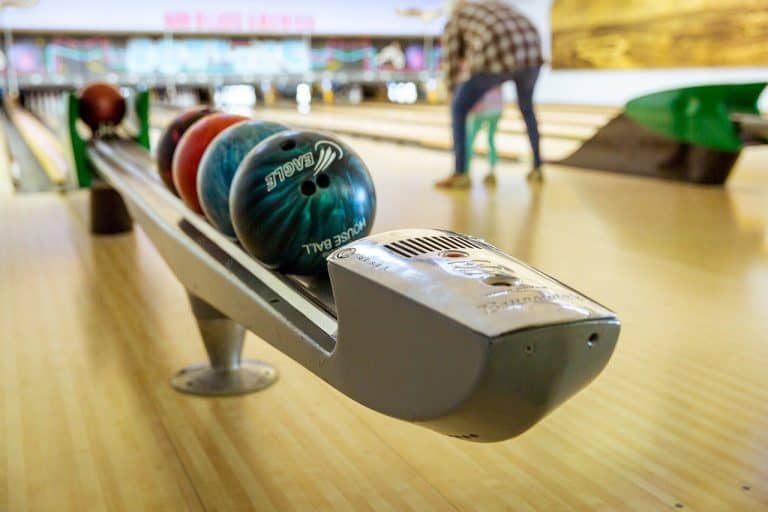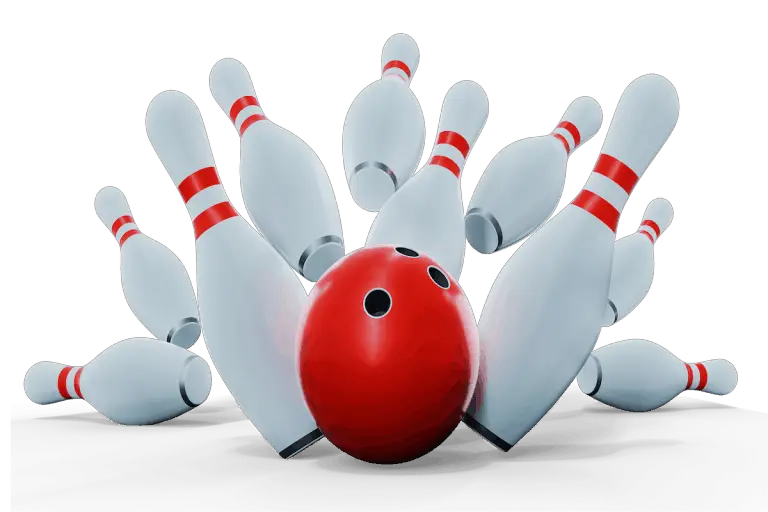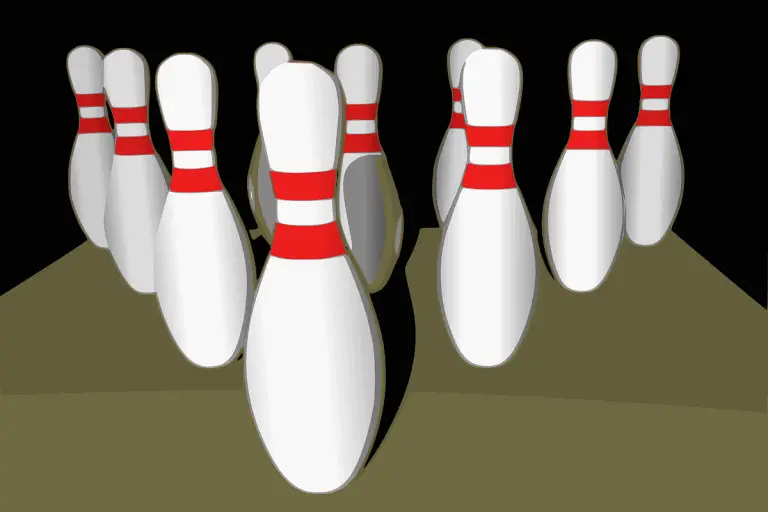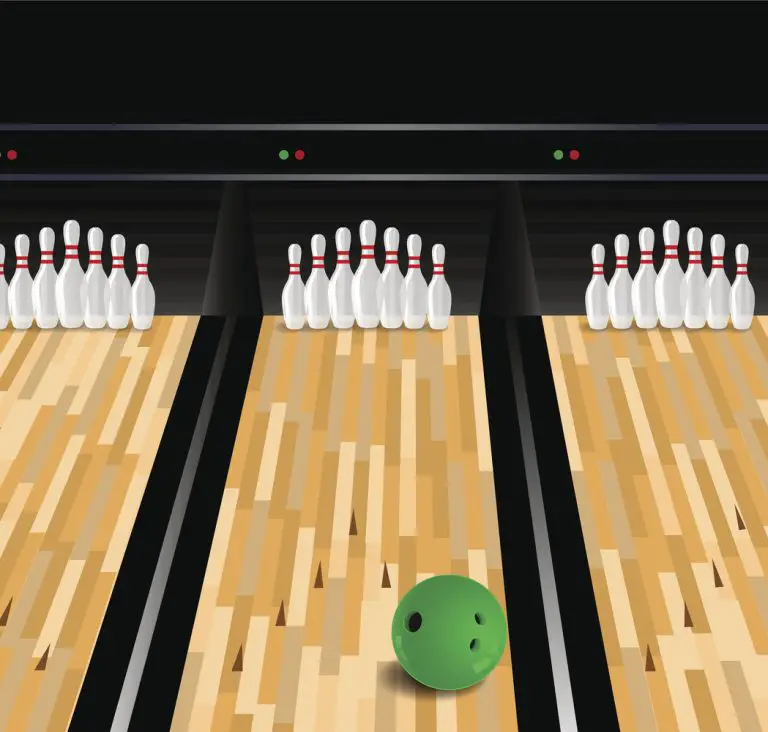How Bowling Shoes Should Fit: A Step-By-Step Guide
Many players may not recognize the importance of the right pair of bowling shoes when it comes to bowling. Whether you are semi-pro, pro, or just a weekend bowler, having the right shoes that are both comfortable and effective will make a massive difference to your performance.
There a number of important factors to consider when measuring for a pair of bowling shoes. The shoe size, the type of sole, the width of the shoe to the type of material, and comfort; there is far more to buying a pair of bowling shoes than meets the foot and the eye!
Let’s dive into the world of bowling shoes and the various aspects you need to consider and measure before buying your pair.
The Basic Anatomy Of Bowling Shoes
Before we get into the fitting side of things, let’ get acquainted with the structure of the bowling shoes for reference.
The standard bowling shoe has eight components, and starting from the front working toward the heel, they are:
- Toe Cap – added to the front to prevent wear and tear while pivoting
- OutSole – A non-marking and flat outsole that provides the slide and traction
- Insole or Midsole – The inner cushion of the shoe for support and comfort
- Heel Wedge – To make pivoting easier, the heel wedge is raised
- Heel Counter – to structurally support the heel with a plastic insert
- Collar – Keep the feet in place and provide support and comfort
- Tongue – For overall good fit and comfort
- Upper -Made from either perforated synthetic or leather for breathing
Why Do You Need Bowling Shoes In The First Place?
To bowl properly, you need two elements to work together your feet! Propelling you forward to generate momentum and then stopping you shy of the foul like to execute a legal throw.
If you have ever tried bowling in socks or barefoot, you’ll know why you really do need bowling shoes. The soles of the bowling shoes do two things. First, they give you a slide, and second, they give you traction.
Many players simply neglect or disregard the role that bowling shoes play and their effect on your scoring. They are the link that connects you to the lane, in the same way choosing the right ball will deliver better results- having the right shoes can make all the difference in your game too!
You need to slide on your back foot and traction on the front as you approach the release or risk guttering the ball or a foul by sliding over the line. While many casual players might wear sneakers or use alley shoes, if you really want to take your game up a level, you’re going to need a decent, well-fitting pair of bowling shoes.
When deciding on which pair of bowling shoes to buy, you need to consider the following:
- Shoe Size
- Type Of Sole
- Interchangeable Soles
- The Right Fit
- Shoe Material
To better understand what these are and how they influence your shoe choice, let examine each of the individually.
The Shoe Size – Do Bowling Shoes Run Big Or Small?
In general, the shoes at the bowling alley will run bigger, while some brands of shoes run smaller or even the same as your regular sneaker size. While you may look to choose shoes online based on your current shoe size, this is a bit of a hit-and-miss approach.
The reason for this is because some brands do run bigger and others smaller, some are wider and some narrower, and without either trying them on or knowing your foot measurements to compare, you may find yourself buying and returning shoes until you eventually get it right or go into a store.
The other point to consider when looking at bowling shoes is the width of them. You may have wider feet than others, and if the shoe is not wide enough, it’s going to be uncomfortable, much the same way shoes that are too wide will leave your feet sliding side-to-side.
When we look at the right fit a bit further on, we will look at the width of the shoe and why it matters in a bit more detail.
How Do I Measure My Shoe Size?
An accurate and simple way to measure your shoe size is by measuring your heel-to-toe length. This will give you a pretty accurate size of your foot, and then use those measurements compared to the shoe specs if you are buying online.
The other option is to go into a shoe store and measure your feet there. Most good stores will have a measuring device of some kind, and you usually put your foot on the device and get a measurement.
You can record and keep that information from there, so when looking around for bowling shoes, you know what size bracket you need to start in. Using this approach will save you time and frustration trying to figure out your shoe size and remove much of the guesswork involved.
Even if you are going into a store, it’s still a good idea to know your size so you have a baseline to work from. You can start with a shoe that is the same size as you usually wear and then tweak the size a little up or down until you have a good fit.
While some brands only size and down in full sizes, many shoes are available in half sizes up and down, making life that little bit easier when finding the correct size.
Should I Size Up Or Down?
As a guide, you should never size down on bowling shoes, as trying to force or squeeze your feet into a shoe of any kind is not advised. While it may feel tight on your foot, remember that your shoe needs to stretch, and when your feet are tightly compressed, you will inevitably develop a blister.
A very tight shoe is also uncomfortable and wouldn’t have the correct levels of support you need while playing. These are all aspects that can play havoc with both your feet and your game.
Sizing up is always a better option, even if it’s only half-size when it comes to sizing, or stay with your normal size, try a few in that range and then try a size of half-size up to see if they fit better.
Even if the shoes are a bit bigger, you can always use thicker socks to pad them and get them to fit a bit more snugly on your feet.
What Type Of Soles Are There And Which Do I Need?
There are two types of soles in bowling shoes: the sliding sole and the traction sole. The type of sole you buy will depend on the level of player or the player you want to become.
The sliding soles have a smooth surface in the front, allowing you to slide while throwing. Typically on alley shoes and beginner shoes, the sliding sole is on both shoes as this allows the bowler to move freely on the lane.
With most beginner shoes, both shoes have the same sliding soles, as this is the most manageable format for bowlers to start with.
The soles are made from leather-like microfiber material, and this offers both protection on the lane and helps you move better. The heel of your shoe stops you when you want to release the ball by gripping on the wood.
The traction soles help produce more grip and power when throwing and allow your body to turn and pivot easier. These soles are featured on the more expensive shoes and are usually used by pro-and semi-pro players or bowlers looking to improve their game.
One of the most significant differences between casual and the more serious players is their shoes! A professional or highly skilled player understands the core importance that the right shoes play in the game.
These players have their shoes set up in a rather interesting and unexpected way. Both soles are the same with regular shoes, but this isn’t the case with bowling shoes.
The sliding sole would be on the left foot and the traction soles on the right for a right-handed player! This is so the player can slide effortlessly to the line and then use the traction to pivot and deliver power.
One of the elements to consider if you are looking to step your game up a level or two, is you need to look at the sliding and traction sole setup on your shoes outside of finding the right size ball and grip.
If you want to improve your game, then the split sole option is going to be better.
Why Shouldn’t You Wear Regular Shoes When Bowling
The reason why wearing your regular shoes isn’t advised is because you may have small stones or dirt in the soles of your shoes, and using this on a smooth polished surface could well damage the lanes as the abrasive nature of dirt or stones will wear the wood away- this is also why bowling alleys offer free shoes to players.
Having wear and tear on the lanes caused by incorrect footwear can lead to damage, and the ongoing cost of repair or replacement of wood is simply not feasible. In most cases, the staff at the alley will insist that you use their bowling shoes or your own if you have them.
Also, you will play better in footwear suited to the sport, and also bear in mind that bowling alleys meticulously decontaminate their shoes between uses, so you don’t have to worry about wearing a dirty pair if you opt for the alley shoes.
Bowling in sneakers or regular shoes would be the same as trying to play golf in sneakers; while you could play, your grip on the ground would be inconsistent, and your shots would be as well.
The same is valid for bowling, as those shoes are specially made to ensure you get the traction and the slide you need to execute the throw safely for both you and the lane.
Another reason to wear bowling shoes is to protect your feet from injury while playing, namely from muscular strains and fractures. The bowling action combined with the weight of the ball creates significant stresses and forces on the body.
If you aren’t wearing shoes that assist in the dissipation of these forces in action, you run the risk of injury to joints, ligaments, and bones. Better safe than sorry, so use bowling shoes.
One last tip- when trying on shoes, whether bought online or at the store, use the socks you would bowl in. There is no point in trying on shoes with thicker or thinner socks if they are not the ones you would bowl in.
Interchangeable Soles For Flexibility and Versatility
Many bowling shoes come with interchangeable soles and heels. This is recommended for most players as it allows you to tweak the slidability on the shoes while remaining comfortable.
The heel of the bowling shoe delivers traction, and changing them to suit your action and level of play is a great advantage. Modern shoes are very different from old ones and offer players of all ages and genders the opportunity to modify their shoes.
While sliding is good, you don’t want to have too much as this will take you over the foul. Interchangeable soles allow you to set your degree of ‘slide’ as needed. The lower-end shoes don’t usually offer this feature, so you may need to look at better-quality ones.
The ability to change heels for grip and soles for slide makes aligning your shoes to your action and level of play a lot easier, and with some trial and error, you can find the right combination.
How To Find The Perfect Fit
It would always be advisable to go into a store so you can try on the shoes before you buy them, but if that’s not possible, then getting your foot measurements is the next best option.
You need to measure from heel to toe to get the exact foot size, and then you can start by selecting some shoe options. The good idea is to try on various brands in the same size and see which one fits better.
You need a little wiggle room in the shoes, much as you have with your regular ones. You don’t want blisters caused if the shoes are too tight or to have your heel move up and down inside the shoe if they are too loose.
When you feel like your shoes are hugging your feet rather than having them in a choke-hold, then that’s a good indication that those are the correct size. There are some other indicators that you can use to tell if your shoe is the right fit.
A simple and easy test to perform to determine the correct size is the so-called ‘thumb test.’ This involves you sticking your thumb down the back of the shoe by the heel, and if you can get about half a thumb width in there, that’s a good fit.
More than that and the shoes are too big, less than that and they are too small. The distance is about 1/8th of an inch if you want to be technical.
You need this space in your shoes as while you are playing, your feet get warmer and expand, and if there is no room, you may end up getting blisters on your heels and having your toes smash into the end of the shoes releasing the ball.
Plus, if the shoes are too tight, it can restrict blood flow, giving you that ‘pins-and-needles sensation, making it both difficult and uncomfortable to play.
Why The Bowling Shoe Width Is Another Important Part
Besides the shoe size, i.e., the length from heel to toe, the width of the shoe is another essential factor to consider. Many bowling shoes have adjustable widths, and the materials they are made from having a certain level of flexibility and stretch to accommodate this.
Modern bowling shoes are made from a variety of materials, including leather and synthetic materials. Natural leather will stretch while synthetic materials won’t. This would need to be a consideration when looking at shoes as well.
There are wide-width shoes you can choose if you have wider feet.
Six Tips For Achieving The Perfect Fit
- When wearing the shoe, there is no discomfort or pain, and the shoe fits both the volume and width of your foot, and there should be no chafing or friction inside the shoe.
- While wearing the shoe, bend, and flex to check the comfort. There should be even pressure on the arch of the foot.
- Use the ‘thumb test’ to ensure the right fit.
- Check for the ‘wrinkle’ on the top of the shoe when laced up.
- It’s better to go shopping for your shoes in the afternoon to warm your feet and replicate playing conditions- don’t forget the socks!
- If you wear orthotics or inner soles, bring them along and add them to see how they fit.
- Test out multiple sizes of the identical shoe to find the best fit
Comfort And Support
The bowling action creates stress on the joints, especially the knees and ankles, and feet. It is super important that you choose shoes that will provide proper support and be comfortable while playing.
We know that kids and ladies have naturally weaker ankles than men do, and this is why ladies need to wear shoes specifically designed for their anatomy, and the same would apply to children.
The very last thing anyone wants is to snap or sprain an ankle or twist keen ligaments while playing, as these injuries are painful and can take a long time to heal. The same goes for men.
While men are stronger, their forces are higher, and much of this force is distributed through the feet and the shoes. Buying a pair of shoes that looks great but doesn’t offer any real support or comfort is an exercise in futility.
You are risking injury to yourself ad could find yourself with blisters and other painful foot conditions by choosing shoes that aren’t adequately suited by size, width, or support.
What Are The Best Brands Of Bowling Shoes?
Fortunately, due to the sport’s popularity in the US and around the world, there are quite a few brands and styles of bowling shoes you can look at.
For men, brands like Dexter with their Pro-AM II; Jack; Turbo II Wide Width and Men’s Ricky, BSI with their Men’s Basic #521, and KR’s Strikeforce all present good options on design, comfort, sole options, and price.
When looking at ladies’ shoes, the BSI Women’s #651 and Women’s Classic, and the Women’s Raquel shoes are available from Dexter.
Remember that these are just a few models and brands available, and you can undoubtedly find the right type of shoe for you to fit your budget, your playing level, and of course, your style!
Taking Care Of Your Bowling Shoes
As with any sport, your gear needs to be looked after. So besides bleeding your bowling ball, here are some tips to keep your bowling shoes in excellent condition!
- Clean them after every game by brushing the sole
- Wash them regularly to remove any oil from the outer sole
- Consider getting shoe covers to protect them while not being used.
- Get a bag or case to put them in along with your ball and uniform
- Disinfect them regularly to prevent a build-up of bacteria and fungi caused by sweating and moisture in your shoes
Conclusion
Investing in a quality pair of bowling shoes is going to yield results in your game and the health of your feet and legs. Not only do they give you better traction and slide and so improve your consistency, but they also support and protect your joints and ligaments from the forces created in action.
With the wide variety of shoes available in a range of styles and prices to suit every budget, there is no reason you won’t find a pair that fits you like a glove, and when you do, both your feet and your game will love you for it!
Resources
http://athleteaudit.com/how-to-choose-bowling-shoes/






